Table of Contents
Vijayanagar Empire Important Facts:
- Robert Swell published his work the forgotten empire (1901) primarily based on foreign accounts.
- There are three main theories regarding the origin of the founders of the empire of Vijayanagar-
- Telugu, Andhra, or the Kakitya origin- main support comes from Kalajnana text.
- The karnata (Karnatka) or Hoysala origin.
- The Kampili origin.
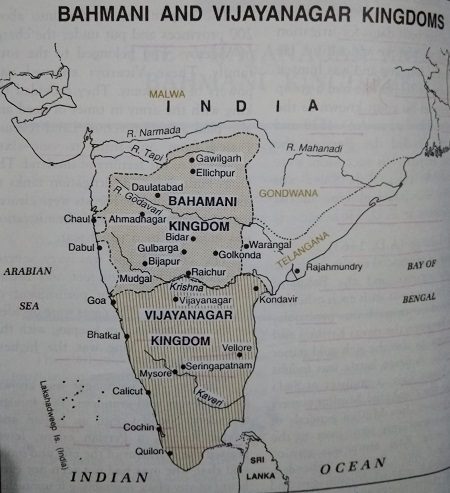
The Sangama dynasty (1336-1485):
Harihara I (1336-56):
- The Vijayanagar Kingdom was founded in 1336 by Harihara and Bukka on the bank of river Tungabhadra. They were the sons of Sangama (the last Yadava king) and had been in the service of the Kakatiyas of Warangal.
- Harihara I, aided by his brother Bukka, started an era of conquest and expansion.
- The Hoysala kingdom was conquered by about 1346, and the Kadamba territories were annexed in 1347.
- Harihara also sent two armies in 1352-53, one under prince Savanna and the other under Kumara Kampana, against the Sultan of Madura.
- Kumara Kampana annexed the sultanate of Madura to the empire of Vijayanagar. This event vividly described by his wife Ganga Devi in Madhura Vijayam (a Sanskrit work).
Bukka I (1356-77):
- Harihara I was succeeded by his brother Bukka I who took up the task of strengthening and expanding the nascent kingdom.
- He fought with the Bahmani Sultan Muhammad Shah I and signed a treaty with him, which made him a virtual master of the Krishna-Tungabhadra Doab.
Devaraya I (1406-1422):
- Devaraya I undertook a number of schemes for the welfare of the people.
- In 1410 he had a barrage across the Tungabhadra constructed. This greatly helped agriculture.
- He also got dug an aqueduct 24 kilometers long from the Tungabhadra to the capital which had hitherto been suffering from scarcity of water.
- He also encouraged the construction of a dam on the river.
- He greatly improved the city also, raising fresh walls and towers, increasing the city area, and building further lines of fortifications.
- Nicolo Conti visited the imperial city during his reign.
- Nicolo Conti describes it as having a circumference of 96 kilometers and containing 90,000 potential soldiers.
- Besides describing the city and its king, Nicolo also mentions festivals like Dipavali, Navaratri, etc.
- Devaraya I was also a great patron of scholars.
- Court gifted Telugu poet Srinatha, the author of Haravilasam.
- The ‘Pearl Hall‘ of the palace where he honored men of eminence is immortalized in literature.
- His capital became the chief center of the learning of South India. Vijayanagar (the city of Victory) had indeed become Vidyanagara (the city of Learning).
Devaraya II (1423-1446):
- Devaraya II was the greatest ruler of the Sangama dynasty.
- He was called ‘Immadi Devaraya‘ and also ‘Proudha Devaraya‘ or the great Devaraya by his subjects.
- As his rule was of great magnificence, the commoners believed that he was the incarnation of Indra.
- The inscriptions speak of his title ‘Gajabetekara‘ i.e. the elephant-hunter.
- He strengthened his cavalry by recruiting trained Muslim cavalry for his army and giving archery training to his soldiers.
- Abdur Razaaq, the Persian ambassador (who was an envoy of Shahrukh) who visited the Zamorin of Kochi and the Vijayanagar court during this time states that Devaraya II controlled a vast area. He received tribute from the king of Sri Lanka too.
- Authorship of two Sanskrit works- Mahanatka Sudhanidhi and commentary on the Brahma Sutras of Badarayana.
- Virupaksha II was the last ruler of the Sangama dynasty.
The Saluvas dynasty (1485-1505):
- Founder- Saluva Narasimha ruler of chandragiri region.
- Vasco De Gama came to India (Calicut) during the reign of Immadi in A.D. 1498.
The Tuluvas Dynasty (1503-70):
- Vira Narasimha founded the Tuluva dynasty.
- Succeeded by his younger brother Krishnadeva Raya.
Krishnadevaraya (1509–29):
- The greatest ruler of Vijayanagar and one of the greatest in the history of India.
- Contemporary of Babur.
- Krishnadevaraya completely shattered the Adil Shahi forces of Bijapur first and attacked Gulbarga and set free three Bahamani princes who were imprisoned there.
- He helped them in recovering the throne of Gulbarga and Krishna Deva himself took the title of Yavanarajya sthapanacharya or restorer of the Yavana kingdom.
- The Portuguese traveler Domingo Paes, who stayed at Vijayanagar during his reign, wrote, “He is the most learned and perfect king that could possibly be….He is a great ruler and a man of great justice”.
- Krishnadeva Raya himself was an accomplished scholar and wrote Amuktamalyada (the story of Andal) in Telugu.
- Krishnadeva Raya Sanskrit works were- Jambavati Kalyanam and Ushaparinayam.
- As a great patron of literature, he was known as Abhinava Bhoja.
- His court was adorned by eight famous scholars called the Ashtadiggajas– the most famous among them were Allasani Peddana and Tenali Ramakrishna.
- Allasani Peddana important works- Manucharitam and Harikathasaram.
- Krishnadeva Raya’s reign is regarded as the classical phase of Telugu literature and he has been, therefore, rightly honored as Andhra Pitamaha.
- He founded a town Nagalapur (near Vijayanagar) and built tanks, gopurams, and temples in various parts of the empire.
- He built famous Vittalaswamy (Musical notes) and Hazara Ramaswamy temples.
Sadashiva Raya (1543-69):
- Sadashiva Raya was only a titular sovereign; the actual government was controlled by Rama Raya who became the undisputed master of the whole of the Vijayanagar empire.
- Rama Raya, a great warrior, and strategist were able to play off the Bahmani Muslim powers against one another.
- He entered into a commercial treaty with the Portuguese whereby the supply of horses to the Bijapur ruler was stopped.
- He fought with the Bijapur ruler and after some time, he allied with the Bijapur ruler against Golconda and Ahmadnagar.
- This divide and rule policy provoked much enmity against Vijayanagar.
- Forgetting their mutual quarrels, the Deccan states (Ahmednagar, Bijapur, Golconda, and Bidar), joined hands to wage the last great battle against their common enemy.
- The glory of the Vijayanagar Empire ended in 1565, at the battle of Rakshasa Tangadi (so-called Talikota), when the combined army of the sultans of the Deccan inflicted a crushing defeat on the Vijayanagar ruler, Rama Raya. He was captured and executed.
- This battle is generally considered the signal for the end of Vijayanagar. King Sadashiva and some of his retinue escaped to Penugonda and then to Chandragiri where the fourth or the Aravidu dynasty (1570-1649) founded.
- The Aravidu dynasty was founded by Rama Raya’s brother Tirumala.
Other Important Points:
- Deccan Sultanates did not join the allies in the battle of Rakshasa Tangadi- Berar.
- The President of the Imperial Council of the Vijayanagar Empire was- Prime Minister.
- The nucleus of the administration of the Vijayanagar Empire was- Imperial Secretariat.
- The largest administrative division in the Vijayanagar Empire was- Mandalam.
- Which new school of painting developed under the Vijayanagar Empire- Lepakshi painting (example of mural painting).
- Confederacy of Deccan Sultanates against the Vijayanagar Empire formed under the leadership of – Ali Adil Shah.
- 3/4th land was the Amram Land– given to Amaranayakas and Palegars.
- Bandarvadha Land– income from this land going to the government treasury.
- Manya Land– income from this land going to Brahmins and temples.
- The capital city of the Vijayanagar Empire was in ruins today- Hampi.
- Gold Coins of the Vijayanagar Empire were called Varaha and Parda.
- Which crop in the Vijayanagar Empire was widely exported- Black Pepper.
- Tall Raya Gopurams or gateways and the Kalyanamandapam were the chief characteristics of the Vijayanagar architecture. Mandapams were used for seating the diety on festival occasion.
- The horse was the most common animal found in the Vijayanagar pillars.
- Ayagar System–
- Was the special feature of village administration.
- A body of 12 functionaries conducted it.
- The ayagars were village servants or functionaries which included headmen (gauda or maniyam), accountant (karnam senabhova), and watchmen (talaiyari).
- They were given a portion or plot in a village.
- Sometimes they have to pay a fixed rent, but generally, these plots were manya or tax-free.
- Nayankar system–
- Was the special feature of provincial administration.
- Nayakars were the military aristocrats.
- They were enjoying too much autonomy.
- Foreign travelers like Nuinz and Paes give information about the Nayakar system.
- Nayakars were enjoying Amaram Land given by the state to them, in return they were given military service to the state.


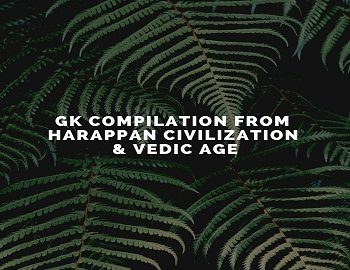

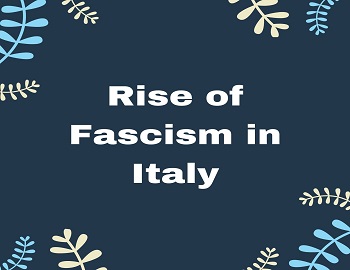
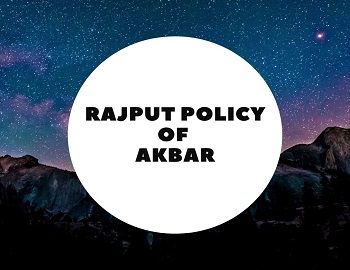
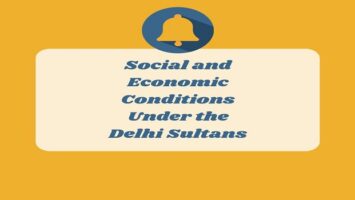
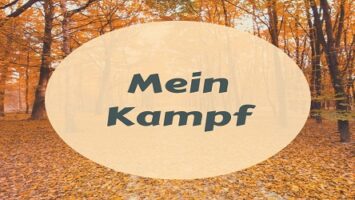
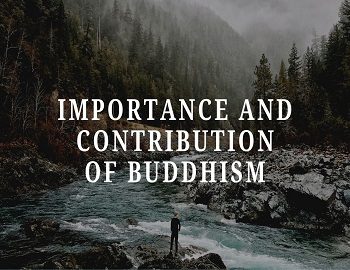
Comments (No)